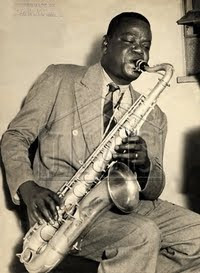New Documentary On Choro - Nas Rodas do Choro (dvd, 2011)
 Throughout the story of choro the meeting of chorões (choro musicians) at rodas do choro (social and musical, informal sessions) has been a crucial affair to evolve and keep the music alive. The roda is the heart of choro tradition and practice involving both the experienced and amateur musician - no restrictions as to age, skin colour, sex or ability. The roda is a truly democratic union of musicians getting together to play together and having a good time in an informal setting that most often also attract an audience of friends, family and admirers.- Earlier this year a new dvd, the shown Nas Rodas do Choro (Biscoito Fino), documenting the importance of the roda de choro in Brazilian tradition was released. The documentary was filmed and directed by Milena Sá between 2004 and 2008, the film was launched 2009 and the dvd-edition July this year. In about 50 minutes, the film features meetings between chorões mostly in the city of Rio de Janeiro (RJ). The narrative fragments are accompanied by musical examples recorded at rodas do choro with testimonials from musicians about their relationship with choro and the roda. The documentary thus turns on the sound and testimonials from the likes of Nilze Carvalho (cavaquinho, bandolim), Joel Nascimento (bandolim), Odette Ernest Dias (flute), Deo Rian (bandolim), Mauricio Carrilho (violão), Zé da Velha (trombone), Silverio Pontes (trumpet) and Luciana Rabello (cavaquinho). The film also focuses on contemporary groups - such as Choro na Feia and Trio Madeira Brazil - while recalling the importance of veterans like Epoca de Ouro, that rescued choro from oblivion after the passing of Jacob do Bandolim and secured its perpetuation during the 1970s revival. - Testimonials on the importance of the roda like "There's no other way to learn choro. It is transmitted in this way, not much to theorize about, what counts is to sit and play together" (Luciana Rabello) underlines the informal setting and points to a way of learning that dissolves a coventional hierarchy between 'teacher' and 'student' in favour of the pleasure of participating in the roda. The music unites young and old, amateurs and experienced in a mutual spirit leaving space for improvisation and experiments of the moment - a true example of 'having fun' and learning at the same time.- The documentary has subtitles in English and French, I should have liked to insert video examples from the film, but I did not find any uploaded. Instead I'll insert a video filmed recently at a roda de choro featuring one of the participating musicians in Milena Sá's documentary. Here's a fragment featuring Joel Nascimento (bandolim) a.o. playing "Receita de Samba"
Throughout the story of choro the meeting of chorões (choro musicians) at rodas do choro (social and musical, informal sessions) has been a crucial affair to evolve and keep the music alive. The roda is the heart of choro tradition and practice involving both the experienced and amateur musician - no restrictions as to age, skin colour, sex or ability. The roda is a truly democratic union of musicians getting together to play together and having a good time in an informal setting that most often also attract an audience of friends, family and admirers.- Earlier this year a new dvd, the shown Nas Rodas do Choro (Biscoito Fino), documenting the importance of the roda de choro in Brazilian tradition was released. The documentary was filmed and directed by Milena Sá between 2004 and 2008, the film was launched 2009 and the dvd-edition July this year. In about 50 minutes, the film features meetings between chorões mostly in the city of Rio de Janeiro (RJ). The narrative fragments are accompanied by musical examples recorded at rodas do choro with testimonials from musicians about their relationship with choro and the roda. The documentary thus turns on the sound and testimonials from the likes of Nilze Carvalho (cavaquinho, bandolim), Joel Nascimento (bandolim), Odette Ernest Dias (flute), Deo Rian (bandolim), Mauricio Carrilho (violão), Zé da Velha (trombone), Silverio Pontes (trumpet) and Luciana Rabello (cavaquinho). The film also focuses on contemporary groups - such as Choro na Feia and Trio Madeira Brazil - while recalling the importance of veterans like Epoca de Ouro, that rescued choro from oblivion after the passing of Jacob do Bandolim and secured its perpetuation during the 1970s revival. - Testimonials on the importance of the roda like "There's no other way to learn choro. It is transmitted in this way, not much to theorize about, what counts is to sit and play together" (Luciana Rabello) underlines the informal setting and points to a way of learning that dissolves a coventional hierarchy between 'teacher' and 'student' in favour of the pleasure of participating in the roda. The music unites young and old, amateurs and experienced in a mutual spirit leaving space for improvisation and experiments of the moment - a true example of 'having fun' and learning at the same time.- The documentary has subtitles in English and French, I should have liked to insert video examples from the film, but I did not find any uploaded. Instead I'll insert a video filmed recently at a roda de choro featuring one of the participating musicians in Milena Sá's documentary. Here's a fragment featuring Joel Nascimento (bandolim) a.o. playing "Receita de Samba" A roda de choro can be established anywhere, even in your own living room as part of a social meeting - here's an example featuring Ronaldo do bandolim (bandolim) playing together with Carlinhos Leite (violão) of Epoca de Ouro and a young Julião Rabello (violão 7 cordas), the tune is "Turbilhão de Beijos" by E. Nazareth
Jo



1 Comments:
This documentary looks enticing. There seems to be a real legacy and history of the choro. I liked the video a lot.
Post a Comment
<< Home